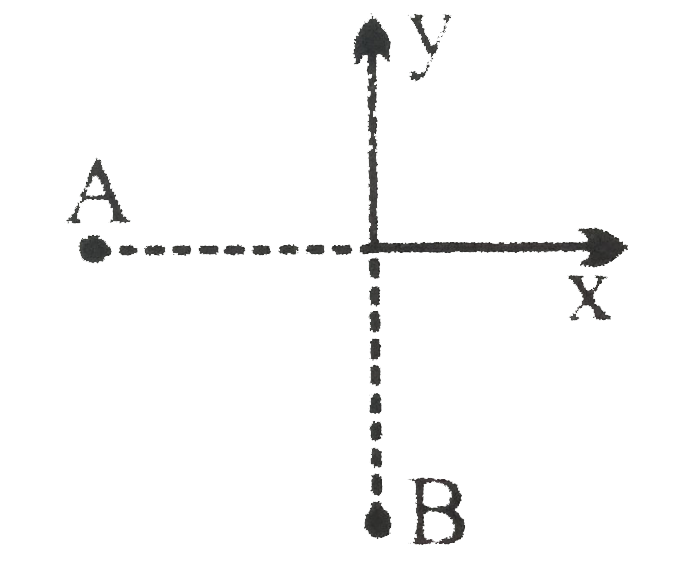Assertion : Distance between two particles moving with consant velocities always remains constant.
Reason : In the above case, relative motion between them is uniform.
If both Assertion and Reason are correct and Reason is the correct explanation of assertion.
If both Assertion and Reason are correct but Reason in not the correct explanation of Assertion.
If Assertion is true but Reason is false.
If Assertion is false but Reason is true.
The correct Answer is:D
and = constant
But distance is increasing.

Topper's Solved these Questions
- MOTION IN A PLANEBOOK - DC PANDEYCHAPTER - MOTION IN A PLANEEXERCISE - (B) Meical entrance special format questions (Mathch the columns)
6 Videos
- MOTION IN A PLANEBOOK - DC PANDEYCHAPTER - MOTION IN A PLANEEXERCISE - (C )Medical entrances gallery
32 Videos
- MOTION IN A PLANEBOOK - DC PANDEYCHAPTER - MOTION IN A PLANEEXERCISE - (A) Taking it together
75 Videos
- MOTIONBOOK - DC PANDEYCHAPTER - MOTIONEXERCISE - Medical entrances gallery
19 Videos
- PROJECTILE MOTIONBOOK - DC PANDEYCHAPTER - PROJECTILE MOTIONEXERCISE - Level - 2 Subjective
10 Videos
Similar Questions
Knowledge Check
Particles A and B are moving with constant velocities along x and y axis respectively, the graph of separation between them with time is
 A
A B
B C
C D
D
Assertion : Acceleration of the particle in uniform circular motion remain constant.
Reason : Velocity of the particle doesn’t change in circular motion.AIf both Assertion & Reason are true & the Reason is a correct explanation of the Assertion.BIf both Assertion and Reason are true but Reason is not a correct explanation of the Assertion.CIf Assertion is true but the Reason is false.DIf both Assertion & Reason are false.Assertion: Friction can occur only between two surfaces that are moving relative to each other.
reason: Friction opposes relative motion between two surfaces in contact.AIF both assertion and reason are true and reason is the correct explanation of assertionBIf both assertion and reason are true but reason is not the correct explanation of assertionCIf assertion is true but reason is falseDIf assertion is false but reason is true
Show that the angular momentum about any point of a single particle moving with constant velocity remains constant throughout the motion. Is there any external torque on the particle ?
View SolutionAssertion: The energy of charged particle moving in uniform magnetic field does not change.
Reason: Work done by magnetic field on the charge is zero.
View SolutionAssertion: If two particles, moving with constant velocities are to meet, the relative velocity must be along the line joining the two particles.
Reason: Relative velocity means motion of one particle as viewed from the other.
View SolutionAssertion : If a particle moves with a constant velocity, then angular momentum of this particle about any point remains constant.
Reason : Angular momentum has the units of Plank's constant.
View SolutionAssertion : Displacement-time equation of two particles moving in a straight line are, s1=2t−4t2 and s2=−2t+4t2. Relative velocity between the two will go on increasing.
Reason : If velocity and acceleration are of same sign then speed will increase.
View Solution
